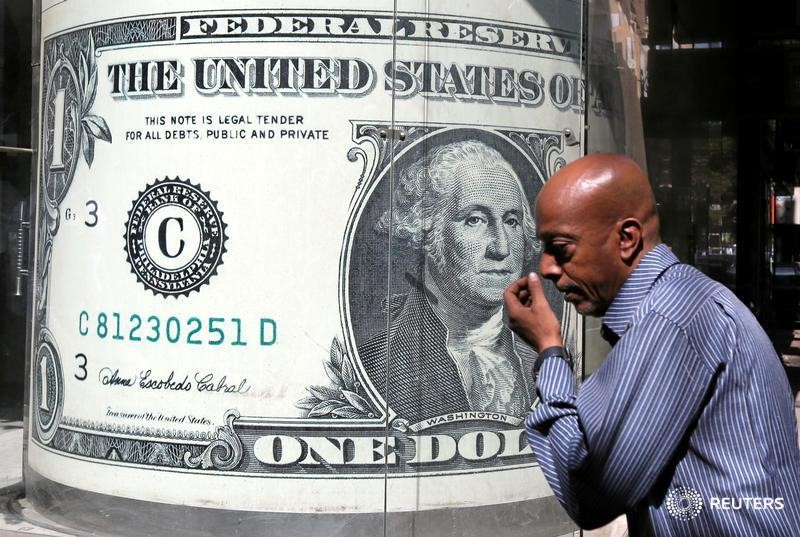By Peter Nurse
Investing.com - The U.S. dollar stabilized in early European trade Thursday, but still lies near its two-decade peak, given safe-haven demand on renewed worries about higher rates and a global recession.
At 3:05 AM ET (0705 GMT), the Dollar Index, which tracks the greenback against a basket of six other currencies, traded largely flat at 104.873, not far below its recent 20-year high of 105.79.
Falling U.S. bond yields have slowed the dollar's ascent Thursday, but the greenback remains in demand as a safe haven with central bankers continuing to express the need to tackle red-hot inflation, even at the expense of a sharp economic slowdown in global growth.
Federal Reserve chair Jerome Powell, speaking on Wednesday at the European Central Bank’s annual forum in Portugal, defended the U.S. central bank’s recent 75 basis point interest rate rise - the largest hike since 1994 - as necessary to help bring inflation back down to its 2% target, even though a broader economic slowdown would be a "likely" outcome.
ECB President Christine Lagarde also warned that inflation in the Eurozone is "undesirably high," and the central bank will go "as far as necessary" to bring inflation back down to its 2% target, while Bank of England Governor Andrew Bailey said policymakers “have the option” of acting more forcefully to contain inflation, not ruling out a hike of 50 basis points at the next meeting.
“The short-term pain of aggressive tightening (perhaps a recession) would be far more preferable to the longer-term pain of a wage-price spiral,” analysts at ING, said in a note.
EUR/USD rose 0.1% to 1.0442, with the single currency attempting to regain its footing after losing almost 0.8% against the dollar on Wednesday, on course for a monthly decline of 2.7% and a quarterly loss of 5.5%.
German retail sales increased in May, despite a slight decline in turnover in food retailing, rising by 0.6% in real terms compared with the previous month, but this still represented a drop of 3.6% on the year.
GBP/USD rose 0.2% to 1.2148, but sterling is still on course for its biggest six-month loss against the dollar, over 10%, after Bank of England governor Andrew Bailey said the U.K. economy was starting to slow while inflation is expected to continue to climb, raising fears of stagflation.
British house prices rose at a slower pace in June than in May, but the average price of a home still hit a new record, according to data from mortgage lender, Nationwide.
USD/JPY fell 0.2% to 136.35, falling back from a fresh 24-year peak of just below 137.00 overnight, as the gap between a hawkish Fed and a dovish Bank of Japan continues to weigh heavily on the yen.
AUD/USD edged higher to 0.6883, while USD/CNY fell 0.1% to 6.6975, helped by data showing China’s factory activities expanded in June, for the first time since February, as authorities lifted COVID lockdowns in major cities such as Shanghai.
